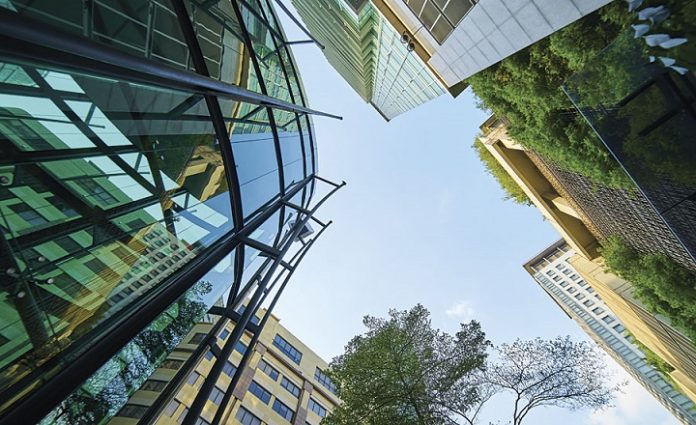The next office building you visit may have innovative technology making it substantially greener thanks to the help of energy efficiency experts at Pacific Northwest National Laboratory (PNNL).
In partnership with the U.S. Department of Energy’s Building Technologies Office, PNNL provided expert analysis and technical background for some of the most ambitious building energy efficiency codes proposed for the 2021 International Energy Conservation Code (IECC) updates.
New energy conservation codes establish a path toward the green buildings of the future. This year, a new code will dictate steps builders must take to reduce the carbon footprint of new and existing commercial and residential buildings. The code establishes minimum energy efficiency requirements for heating, lighting, ventilation, insulation, windows, and other energy-related building components. Considering that buildings contribute to nearly 40 per cent of annual greenhouse gas emissions in the United States, ensuring they’re as efficient as possible is critical in slowing the course of climate change.
This year, PNNL endorsed and helped develop an energy credit proposal, which establishes a new points-based system for implementing the additional efficiency package requirement in IECC Section C406. This code requires builders to elect additional energy efficiency measures for their new or existing commercial building. Under the 2018 IECC, all measures were considered equally without factoring in building type, specific measure energy impact, or the impact of different climate zone locations on energy consumption.
This meant that credits were given for measures that would have been included in green buildings anyway, making any efficiency savings relatively slim.
“By adopting a credit and point-based system, we create a more level playing field for energy efficiency,” said Reid Hart, a lead building research and development engineer at PNNL who provided analytical support during the code development process.
Green buildings get extra credit points
Erik Makela, representing the Northwest Energy Codes Group, proposed the new points-based system, which optimizes green buildings for energy savings potential by assigning points to each measure relative to the building’s climate zone location or occupancy types, like school, retail, or office building.
Builders can choose from a list of 14 energy-saving measures including things like installing an on-site supply of renewable energy, implementing a dedicated outdoor air system, or reducing lighting by 10 per cent. Each one-quarter per cent of energy savings equals one point in the points-based energy credit system, with the goal of achieving 2.5 per cent cost savings overall. Buildings are required to accrue at least 10 points to satisfy the additional efficiency package requirement.
“Think of it as picking from a menu of options,” said Hart. “Although it can be a bit more complex to implement, it provides more energy savings, more flexibility, and better outcomes for the environment.”
For example, office buildings located in arid Eastern Washington that improve cooling system efficiency by 10 per cent only get three points toward their credit. Conversely, the same efficiency measure would accrue 10 points if the building were located in warmer, more humid places like Central Florida or Southeast Texas.
Greenlight for green buildings
While the energy credit proposal is slightly more involved, it gives more flexibility to designers and builders. The inclusion of the points-based system into the code is also a big win for green building advocates and the environment.
Every three years, updates to the efficiency building codes are proposed by stakeholders from varied backgrounds, including code officials, energy efficiency and green building advocates, builders, scientists, and more. The proposals go through multiple rounds of regulatory hearings, votes, and appeals. The majority don’t make it to the final round. In fact, in this last round, over 250 code updates were proposed and only 79 of them passed.
PNNL’s expert analysis and defence during the IECC hearings proved critical to the success of the energy credit proposal and its subsequent approval.
“Our analysis helped others develop their code proposals, and we participated in the hearings to defend that analysis,” said Hart. “We believe the new points-based approach will signal a big win and put America on a path toward gradually achieving net-zero carbon emissions for commercial buildings.”








